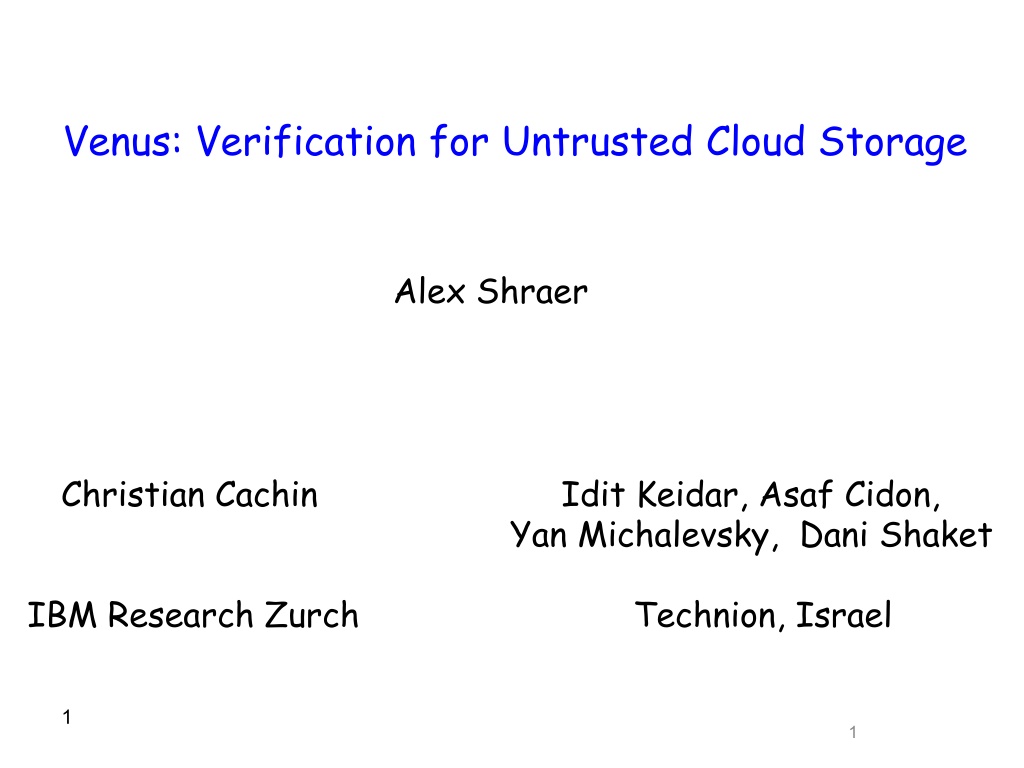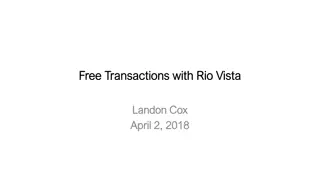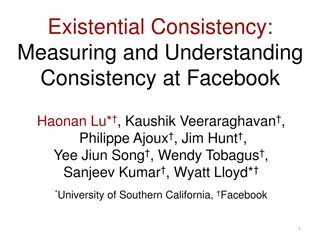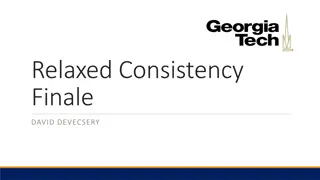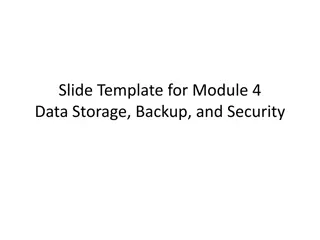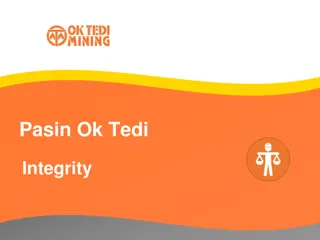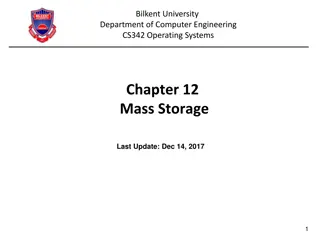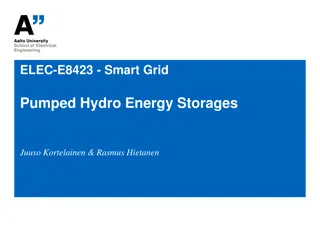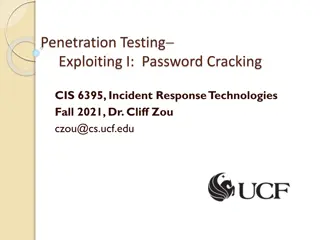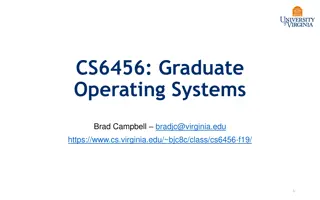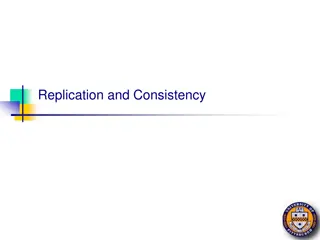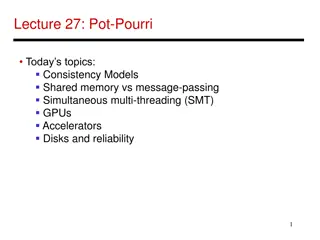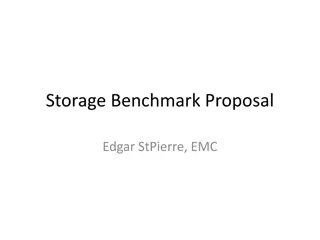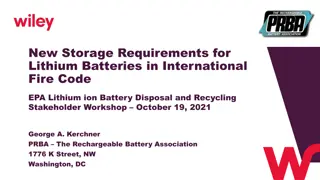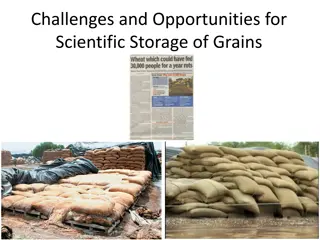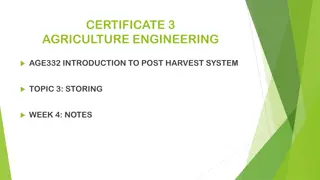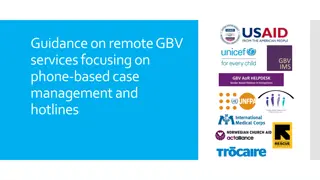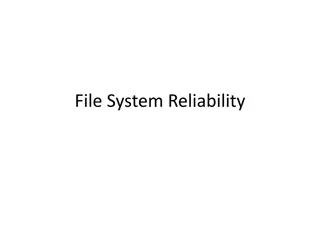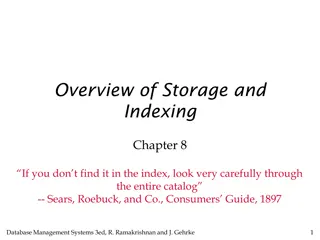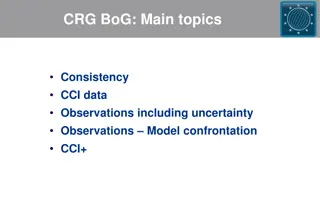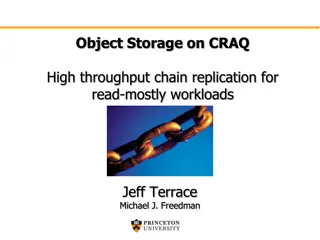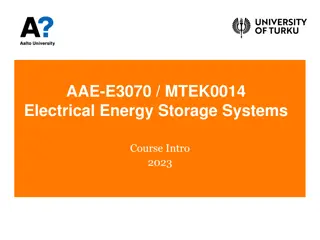Ensuring Integrity and Consistency in Remote Storage Systems
Venus project aims to address trust issues in cloud storage by guaranteeing integrity and consistency to users even in the presence of faults. It explores strong consistency requirements, challenges in achieving it, and proposes solutions like fork linearizability to handle faulty servers effectively.
Download Presentation

Please find below an Image/Link to download the presentation.
The content on the website is provided AS IS for your information and personal use only. It may not be sold, licensed, or shared on other websites without obtaining consent from the author. Download presentation by click this link. If you encounter any issues during the download, it is possible that the publisher has removed the file from their server.
E N D
Presentation Transcript
Venus: Verification for Untrusted Cloud Storage Alex Shraer Christian Cachin Idit Keidar, Asaf Cidon, Yan Michalevsky, Dani Shaket IBM Research Zurch Technion, Israel 1 1
The benefits of cloud computing Clients Cloud provider The cloud enables clients to: Obtain resources on demand Pay only for what they actually use Benefit from economies of scale Cloud storage Outsource the storage Replace or combine with in-house storage 2
But can we trust the cloud? Software bugs, hardware malfunction, network partition, misconfiguration, hacker attack, provider outsources to save money, .... Amazon S3, 2008, silent data corruption: We ve isolated this issue to a single load balancer under load, it was corrupting single bytes in the byte stream... More in [Cachin, Keidar, Shraer, SIGACT News 09] 3
Our Goal Guarantee integrity and consistency to users of remote storage even when the storage is faulty and detect failures 4
Consistency Semantics guaranteed when accessing shared data Some applications require strong consistency Credit/medical records, meta-data for a distributed file system Updates should be immediately visible to readers enforce a credit limit, change patient s treatment, revoke user access For others, weaker semantics might be good enough Collaborative document editing wiki, Google docs, MS Sharepoint, version control Clear semantics are necessary for programmers/users 5
Can we guarantee strong consistency? ACK X = X 7 X write (X, 7) read (X) Impossible to guarantee atomicity (linearizability) Unless clients communicate directly before ending each operation Also impossible: sequential-consistency [Cachin, Shelat, Shraer, PODC 07] What can be guaranteed ??
Fork linearizability Faulty server may present different views to clients Fork their views of the history Each branch looks linearizable start (X= ) read(X) write(X, 7) read(X) 7 read(X) Views are forked ever after (no "Joins") can be detected using client-to-client messages Different flavors and implementations [Mazi res & Shasha PODC 02] [Li et al., OSDI04] [Li & Mazi res, NSDI 2007] [Oprea & Reiter, DISC 2006] [Cachin, Shelat, Shraer, PODC 07] 7
Usual flow of forking algorithms SUBMIT read/write operation REPLY: operation context (op1, op2, were scheduled before you) [For read operation also: value, signed context of corresponding write] Client COMMIT op (signed context) Server Joins , and how to prevent them My context is: start C2 is forked from C1 (I am the first operation) A Join not allowed with fork linearizability write(X, 7) C1 C1 read(X) read(X) 7 C2 Something is wrong! My context is: start (I am the first operation)
Problems with forking 1. Blocking We proved: all previously defined forking conditions hamper system availability when the storage is correct 2. Too complicated Too different from conventional consistency / memory models 3. Remote storage must execute the forking protocol Can t use with commodity cloud storage 9
Venus Design Principles 1. Defenses should not affect normal case Never block clients when the storage is correct 2. Simple, meaningful semantics Eventual consistency Fail awareness clients learn of every consistency/integrity violation post-attack method checks if server behaved correctly (application specific) doesn t require trusted hardware / synchrony 3. Deploy on standard cloud storage 10
Eventual Consistency First used in Bayou (SOSP 95) Today in commercial systems, e.g., Amazon s Dynamo (SOSP 07) Client operations complete optimistically Client notified when its operation is known to be consistent But may invoke other operations without waiting for these notifications Resembles Futures, Promises, etc. Future<T>: result of an asynchronous computation Concept exists since late 70s java.util.concurrent.Future in Java, Parallel Extensions library for C#, Sub::Future in Perl, pythonfutures for Python, etc. 11
Venus Architecture May be hosted and distributed Verifier Verifier May crash, or temporarily disconnect Commodity Storage Service May disconnect, but majority don t crash suspecting failure Using e.g., email When joining or client-side library core set
Venus Semantics When storage is correct, operations are wait-free An operation is Yellow when it completes Guarantee: integrity and weak (causal) consistency It later becomes Green Implies that all preceding ops of this client are also Green Guarantee: all clients observe Green operations in the same order (two conflicting operations cannot both become Green) Every Yellow operation eventually becomes Green, or failure is detected 13
Venus Basics Clients read/write data directly from storage Separately store meta-data on verifier Optimistically parallelized with storing the data Meta-data: pointer to storage, hash, and context info Operation becomes yellow when it completes If integrity/causality violated, operation doesn t complete, failure notification is issued Did core set clients observe my op as I did ? Operation becomes green when enough context info is collected Periodically retrieve context info from verifier If no new info for long enough, contact a core client directly 14
Venus Implementation & Evaluation Amazon S3 used as the storage service Location of verifier: same LAN as clients @ Technion over WAN connection, on a public computer @ MIT Clients join with id = email address Clients (rarely) send automated emails to each other (SMTP & IMAP) Supports offline clients, clients behind firewalls, etc. GnuPG was used for authentication Tested using micro-benchmarks & simulated attacks 15
Conclusions Venus offers simple yellow/green semantics Augments storage read/write interface with green&failure notifications Eventual consistency + Fail-Awareness Provides consistency & integrity, even when storage is faulty No additional trusted components Normal flow unaffected: client ops complete independently Works with unmodified cloud storage, evaluated with S3 17
Questions? 18
